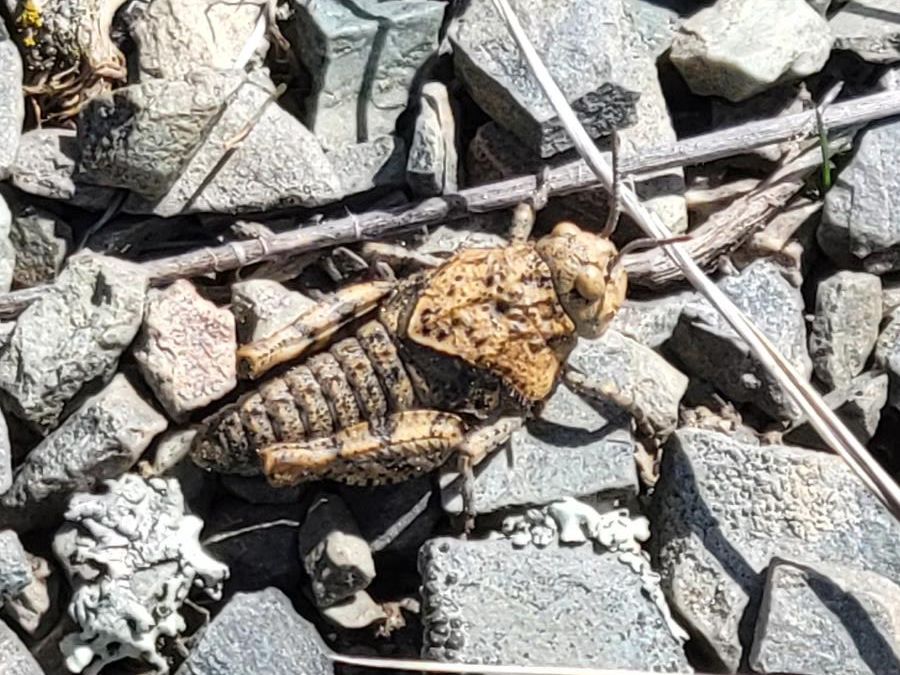It’s that time of year! Despite variable weather, the insects are emerging from their winter slumber to soak up the warmer days (just like we are). We’ve already seen our early spring regulars, along with a few surprising emergences. We’re well on our way to another fruitful season of What’s Buzzin’, so get outside and see what you can find!

Thatching Ant (Formica sp.)
Species in the Formica genus are commonly referred to as wood ants, mound ants, or thatching ants, and for good reason. They are often found building large, mounded nests on the forest floor from plant debris. Formica sp. are usually between 4 and 8mm long, and can be aggressive defenders of their home.
Photo by Glenn Marangelo, April 8th, 2023. Choteau, MT.
Common Green Lacewing (Chrysoperla sp.)
Not all common green lacewings are green. This brown individual is showing off his winter coloration. Identifying lacewings to species is extremely difficult. One of the few surefire ways to identify this group to species is by listening: The males use vibrations to attract their mate, and the vibrational patterns are unique to each species. Be sure to bring your ear trumpet.
Photo by Kasey Bader, April 10th, 2023. Missoula, MT.
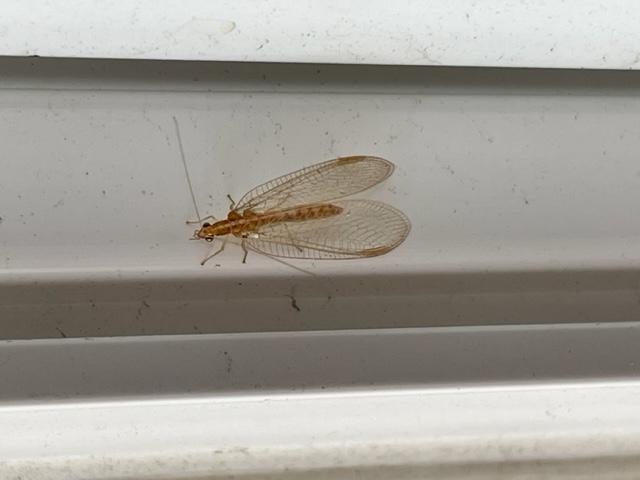
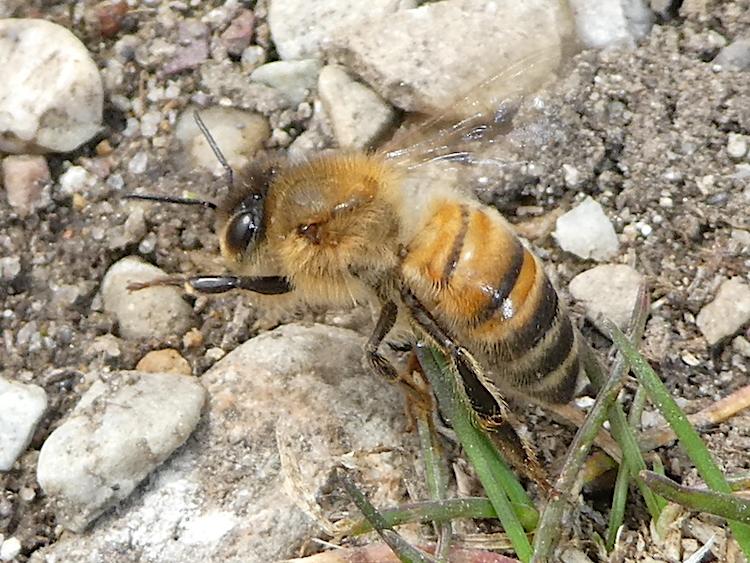
Western Honey Bee (Apis mellifera)
Our pollinators aren’t wasting any time in getting started this season. Western honey bees, while a non-native species, are one of the most recognizable bees in our gardens. As generalist pollinators, the 10-15 mm long bees will gather nectar and pollen from just about any flower they can find. On fruitful afternoons, you can easily spot the large pollen baskets on their hind legs. They then haul the pollen back to their hive to feed their young.
Photo by Glenn Marangelo, April 8th, 2023. Lolo, MT.
Eastern Boxelder Bug (Boisea trivittata)
Chances are, we’ll see lots of box elder bugs in the next month or so. These true bugs emerge on warm days to congregate in sunny areas and warm themselves. We live in an area where the only two species of North American boxelder bugs overlap. The western boxelder bug is recognized by the more pronounced red venation on its back. It is less common than the eastern boxelder bug shown here.
Photo by Brenna Shea, April 10th, 2023. Missoula, MT.
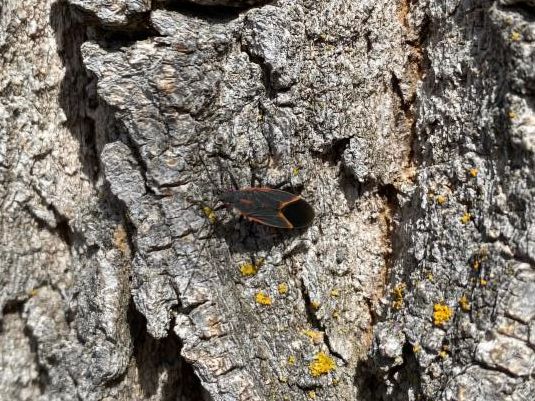

Wolf Spider (Alopecosa sp.)
Wolf spiders are easily recognized by their large size and unique eye arrangement. However, they are difficult to identify, even to genus. Based on the markings, we believe this individual belongs to the genus Alopecosa (commonly referred to as fox spiders). Wolf spiders in general have fearsome reputations. In reality, they are a shy group that prefer to be outdoors, away from human activity.
Photo by Glenn Marangelo, April 9th, 2023. Stevensville, MT.
European Ground Beetle (Carabus nemoralis)
Often one of the first beetles observed in the spring, C. nemoralis is commonly found under piles of decaying leaves leftover from the previous year. While non-native, gardeners welcome this ground beetle; they feed on common garden pests like slugs and their eggs.
Photo by Rose Marchak, April 10th, 2023. Greenough Park, Missoula, MT.
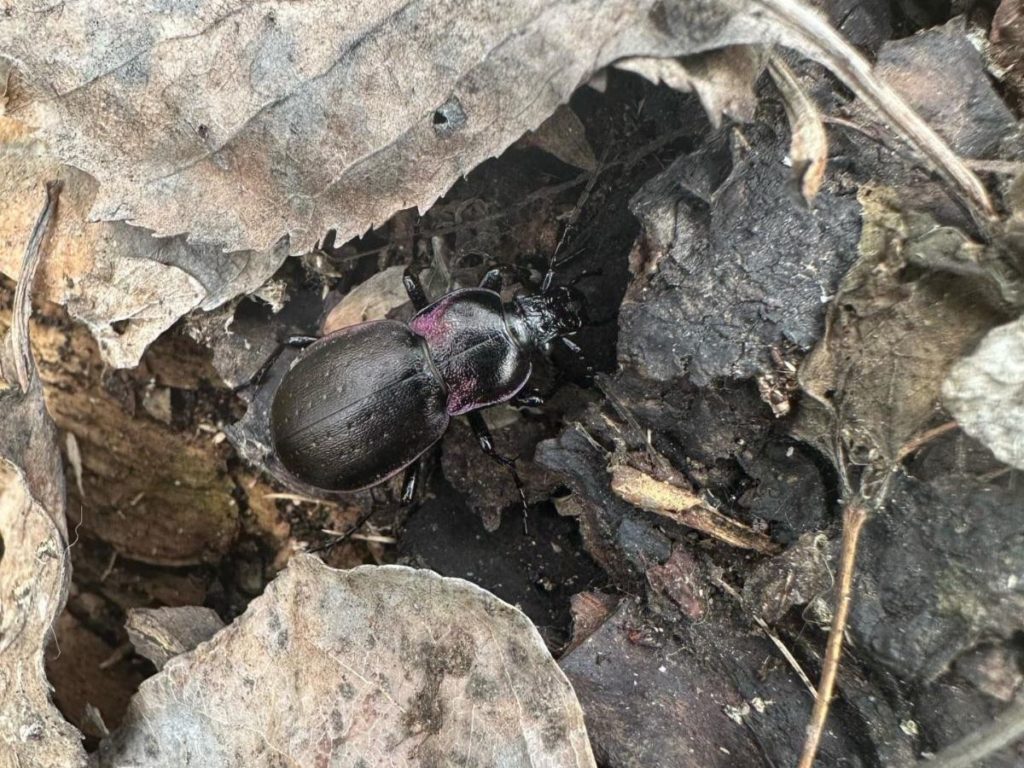

Armored Harvestman (Sclerobunus idahoensis)
Harvestmen, or daddy long-legs, are non-venomous arachnids more closely related to scorpions than spiders. This uncommon species has shorter legs than the average harvestman, but its large, intimidating chelicerae help it snatch prey with ease. Harvestmen are often confused for spiders, but can be recognized by their fused body segments.
Photo by Rose Marchak, April 10th, 2023. Greenough Park, Missoula MT.
Wolf spider (Pardosa sp.)
Another wolf spider sighting, this one belonging to the genus Pardosa. Pardosa sp. are recognized by the perpendicular spines on their hind legs. Wolf spiders are constantly on the move. Females attach their egg sac to their spinnerets and take them wherever they go. Once they hatch, the spiderlings climb onto their mother’s back until they are large enough to venture out on their own.
Photo by Rose Marchak, April 10th, 2023. Greenough Park, Missoula, MT.
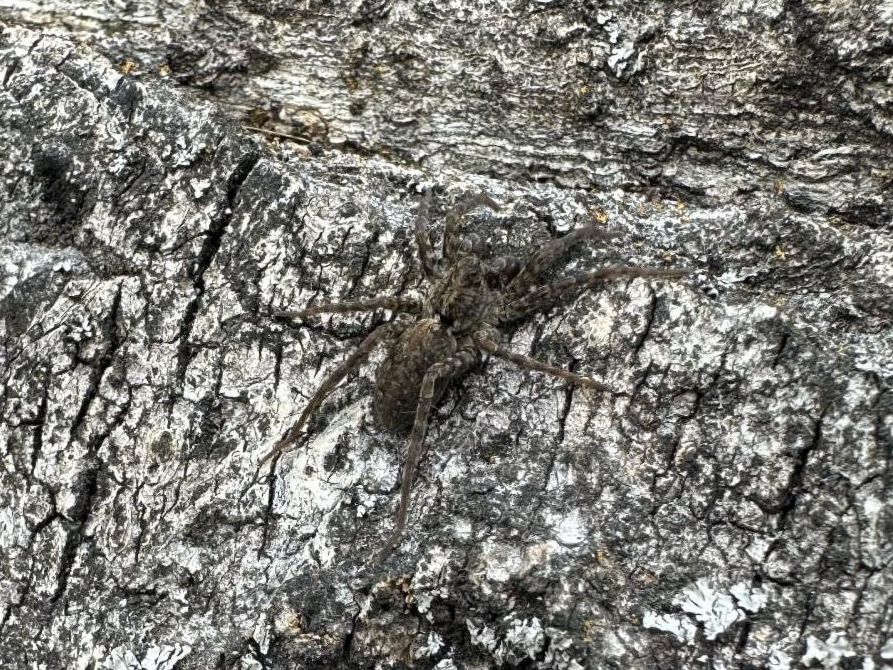
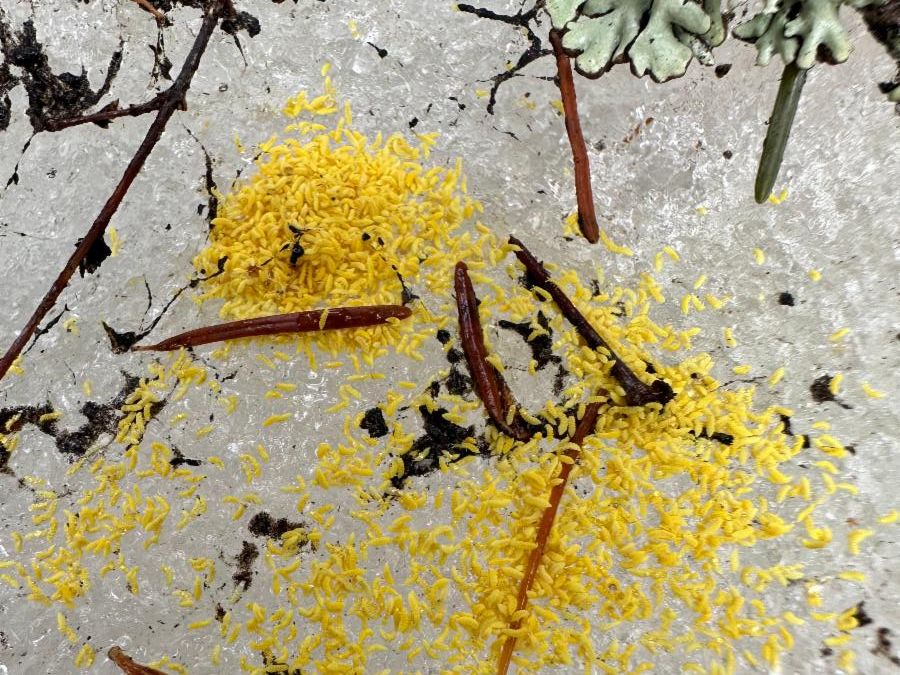
Golden Snow Flea (Hymenaphorura cocklei)
Snow fleas are not true fleas, but a group of arthropods known as springtails. Springtails had their insect status revoked and were reclassified as Entognatha, with mouthparts that are enclosed within the head. Insects, on the other hand, have external mouthparts.
Photo by Jane Smith & Sharon Dill, April 11th, 2023. Rattlesnake area, Missoula, MT.
Banded Wing Grasshopper Nymph (Oedipodinae)
Grasshopper ID is tough, and identifying them as nymphs is even harder! We can at least narrow this young nymph down the Oedipodinae subfamily: bandwing grasshoppers. Few grasshopper species overwinter as nymphs; they typically overwinter as eggs. When this nymph takes flight as an adult, its wings display bright colors, a method used to startle predators (and occasionally unsuspecting humans).
Photo by Connie Geiger, April 10th, 2023. Scratchgravel Hills, Helena, MT.
